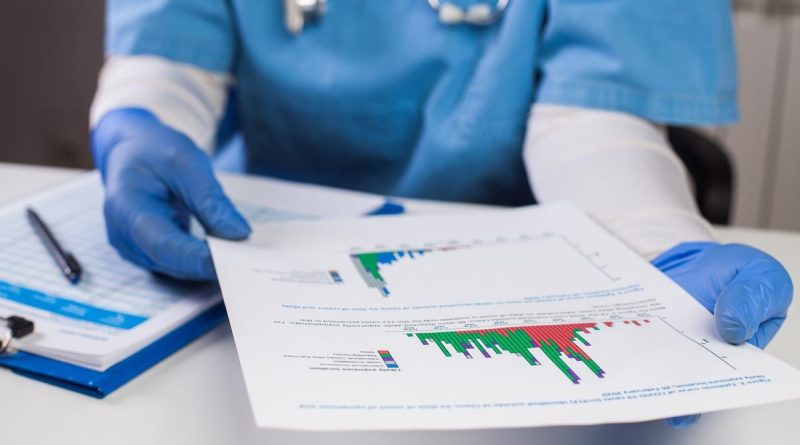Researchers develop scoring tools to determine hospitalization and mortality risk in COVID-19 patients
In a recent study published in PLOS One, an interdisciplinary team of researchers from the United States (US) conducted a large retrospective study on a cohort of severe acute respiratory syndrome coronavirus 2 (SARS-CoV-2) patients.
They developed and validated a simple and precise scoring tool to risk stratify coronavirus disease 2019 (COVID-19) ambulatory and emergency department patients for subsequent hospitalizations and mortalities.

During the COVID-19 pandemic, the hospital burden and strain on healthcare workers have increased enormously. Due to the limited availability of COVID-19 therapies, there is a need to identify COVID-19 patients who were at increased risk of progression to severe disease, hospitalization, and mortality.
In this study, the researchers developed a scoring model using large and diverse population characteristics in the Western US, that were easily accessible and conserved across the global population.
Study design
In the current study, the team included all patients who tested SARS-CoV-2-positive within the Intermountain Healthcare System from 25 March 2020, to 1 October 2020. A total of 22,816 patients were included in the study. Data related to COVID-19 symptoms were extracted from the electronic health record (EHR) while demographic and co-morbidity data of patients were obtained from Intermountain Prospective Observational COVID-19 (IPOC) database and the enterprise data warehouse.
The researchers randomly divided the cohort into a 70% derivation cohort and a 30% validation cohort. They fitted a multivariable logistic regression model in the derivation cohort data for 14-day hospitalization using clinical and demographic features. The area under the receiver-operator characteristic curve (AUROC) was used to evaluate model discrimination and R2 for evaluating model fit.
A simple scoring tool for each variable was developed by converting β coefficients into weighted points. In the derivation and validation cohorts, the performance characteristics of this clinical prediction tool were assessed using AUROC. Finally, the researchers performed temporally independent internal validation of the scoring tool in cohorts for evaluating the prediction of hospitalization and 28-day mortality.
Findings
The findings of this study demonstrated that the mean age of COVID-19-positive patients was 40 years with over 50% females and more than 43% of patients were of Hispanic, non-White, or Latinx ethnicity. Among the 22,816 COVID-19-positive patients included in the study, 6.2% were hospitalized, out of which 3.6% tested COVID-19-positive in the emergency department leading to hospitalization later on. Overall, 0.4% of the admitted patients died within 28 days of SARS-CoV-2-positive results. Demographic and clinical characteristics were identical between the derivation and hold-out validation cohort.
Multivariable logistic regression model applied in the derivation cohort illustrated adequate model diagnostics [AUROC 0.824; (95% CI 0.809–0.840)]. Patient characteristics like age, male gender, communities of color, dyspnea, and high-risk comorbidities such as obesity, diabetes, immunosuppression, and chronic neurological disorders were associated with significantly higher odds of hospitalization. Exploratory analysis involving the replacement of individual comorbidities in the regression with total morbidities count showed a significant cumulative number of comorbidities [odds ratio (OR) 1.4; 95% CI 1.3–1.5)].
The planned sensitivity analysis of the derivation cohort excluded patients tested in the emergency department during their hospital admission. Multivariable logistic regression model for hospitalization showed slightly reduced performance [AUROC 0.789 (95% CI: 0.768–0.810)] during sensitivity analysis. In this model, the contribution of individual risk factors was similar as compared to the model including patients admitted to the emergency department. The only exception was reduced risk of dyspnea in the ambulatory cohort (OR 2.1 vs OR 3.5) and greater odds of immunosuppressed patients admitted without palliative care were observed (OR 7.0 vs OR 3.9).
The team developed a simplified clinical prediction score for various outcomes of COVID-19. It was noted that in the derivation cohort and hold-out validation cohort, AUROC for the clinical prediction score for 14-days hospitalizations were 0.82 and 0.8, respectively. While AUROC for 28-days mortality was 0.91 and 0.80 in the derivation and validation cohort, respectively. AUROC for hospitalization and mortality in the temporally independent validation cohort was 0.76 and 0.9, respectively.
The researchers illustrated a scoring threshold of 6 that optimized specificity and sensitivity by Youden’s index with test characteristics of 76.2% and 71.1%, respectively. In the derivation cohort, the AUROC for hospitalization and mortality as predicted by the Charlson comorbidity index was 0.74 and 0.82, respectively.
Conclusion
This study demonstrated the development of a prediction score based on the clinical and demographic attributes of COVID-19 patients at the time of testing that accurately stratify the risk of hospitalization and death among the COVID-19-positive patients. This scoring system does not require laboratory tests. The tool will guide the allocation strategy of limited preventive COVID-19 therapies like monoclonal antibodies in a more judicious manner.
However, the study has some limitations which included the observational retrospective design of the study and the probability that comorbidities data may have been unavailable or outdated for patients who availed medical care apart from the healthcare environment considered in the study.
The authors warrant the need for external validation to confirm the likelihood of generalizability before adopting this scoring tool in a heterogeneous and geographically independent population.
- Webb BJ, Levin NM, Grisel N, Brown SM, Peltan ID, Spivak ES, et al. (2022). Simple scoring tool to estimate the risk of hospitalization and mortality in ambulatory and emergency department patients with COVID-19. PLOS ONE. doi:https://doi.org/10.1371/journal.pone.0261508 https://journals.plos.org/plosone/article?id=10.1371/journal.pone.0261508
Posted in: Medical Research News | Medical Condition News | Disease/Infection News
Tags: Antibodies, Chronic, Coronavirus, Coronavirus Disease COVID-19, covid-19, Diabetes, Diagnostics, Dyspnea, Electronic Health Record, Healthcare, Hospital, Immunosuppression, Laboratory, Mortality, Obesity, Palliative Care, Pandemic, Respiratory, SARS, SARS-CoV-2, Severe Acute Respiratory, Severe Acute Respiratory Syndrome, Syndrome

Written by
Sangeeta Paul
Sangeeta Paul is a researcher and medical writer based in Gurugram, India. Her academic background is in Pharmacy; she has a Bachelor’s in Pharmacy, a Master’s in Pharmacy (Pharmacology), and Ph.D. in Pharmacology from Banasthali Vidyapith, Rajasthan, India. She also holds a post-graduate diploma in Drug regulatory affairs from Jamia Hamdard, New Delhi, and a post-graduate diploma in Intellectual Property Rights, IGNOU, India.
Source: Read Full Article
